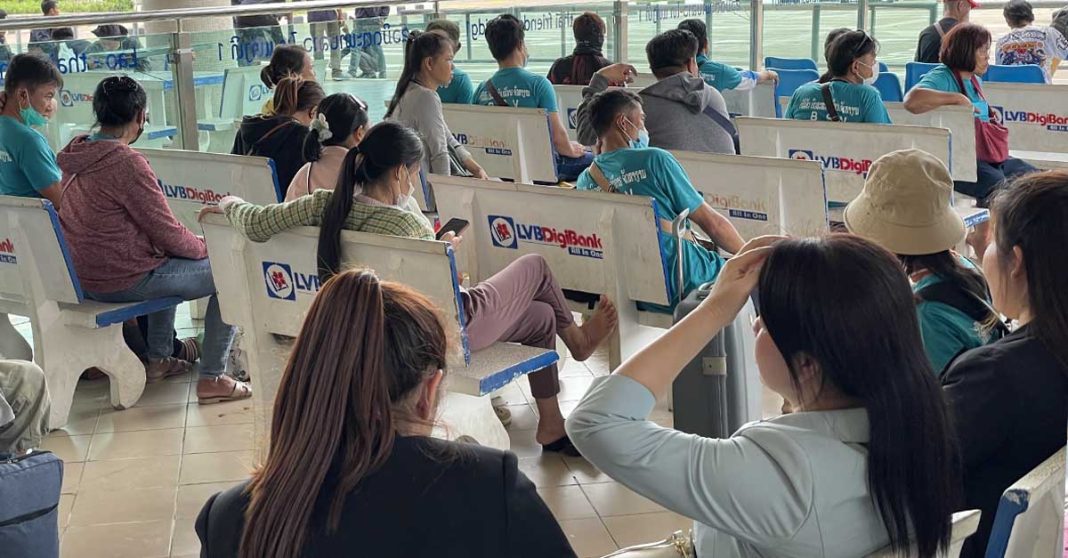Lao workers are leaving the country in large volumes, searching for employment opportunities abroad amid the skyrocketing cost of living. But in a delicate balancing act, the government of Laos is also trying to attract foreign investment in a bid to increase domestic production.
In June this year, the Lao government announced its intention to attract more domestic and international investments and alleviate the country’s financial woes, relieving the reliance on imports and easing the debt burden.
At the same time, from the manufacturing industry to construction and hospitality, local businesses have reported a dire shortage of labor, which has affected their operations and post-pandemic recovery.
The labor crisis has been caused mainly by workers seeking employment in other countries due to low wages in Laos, which, despite some increases, have failed to keep pace with the continued depreciation of the Lao Kip.
Compounding matters, Lao government organizations have even authorized and facilitated workers in pursuing temporary employment abroad in countries such as South Korea, Thailand, and Japan – through legal channels and programs. Those who are not able to find work legally often resort to illegally crossing into neighboring countries to scout for work.
But the chronic labor shortages, exacerbated by the government’s facilitation of worker migration abroad, have left many domestic businesses in dire straits.
Representatives of the garment industry, which relies heavily on Lao labor, have spoken out about the issue, telling the labor ministry that the problem must be addressed.
Vientiane Times recently reported that a representative of Mascot International Lao, a Danish-owned garment factory operating in Laos, told the Minister of Labor and Social Welfare, Baykham Khattiya, that the number of workers in the garment industry has been declining since 2021.
The company cited Lao workers leaving the country for better opportunities as the main reason, with the factory saying it still needs more than 2,000 workers.
Mr. Jawwad Khan, manager of Riccardo Garment Company, based in Vientiane, told the Laotian Times that his company has had trouble finding and keeping workers, particularly operators and assistants who can train their employees.
However, some observers are more optimistic, with one Lao economist saying that the labor shortage is not yet a concern for the entire domestic labor force, even though low minimum wages have been driving Lao workers to seek employment elsewhere.
“I believe that the country is not experiencing that drastic of a labor shortage; however, workers are indeed paid less in Laos, especially those employed in the provinces. Hence, they choose to look for work in Thailand both legally and illegally,” said Somsay Ouanphilalay, a consultant attached to the Ministry of Industry and Commerce.
According to Somsay, workers who have been sent to South Korea and Japan through official or legal programs are less likely to affect the domestic labor force, as such schemes usually include short-term employment for workers to acquire more skills and return to Laos to implement what they have learned overseas.
“To achieve a balance between investment and worker support, the government should focus more on improving the investment entry framework, making it easier to start and conduct business in Laos and at the same time ensure that vocational institutions can provide sufficient skilled workforce for their operations,” he said.
To reduce the financial burden of Lao workers, the Prime Minister’s Office has approved raising the minimum monthly wage in the country from LAK 1,300,000 (USD 67) to LAK 1,600,000 (USD 83) starting in October.



